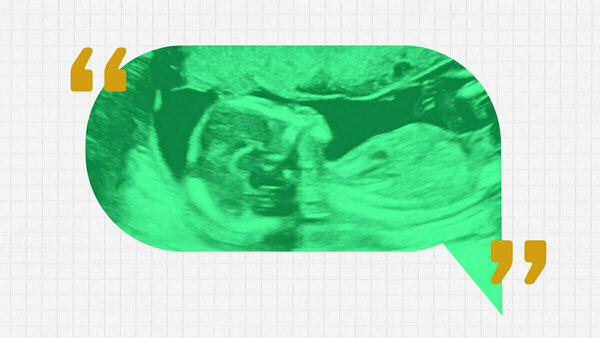Protective actions need regulatory support to fully defend homeowners and coastal communities, study finds
As climate change drives increasingly severe hurricanes, U.S. coastal communities are bearing the brunt of mounting losses. With regulations failing to curb the damage, homeowners have become the front line of defense — but their efforts often fall short, a recent study reveals.
Led by Tracy Kijewski-Correa, professor of engineering and global affairs at the Keough School of Global Affairs at the University of Notre Dame, the study, published in the International Journal of Disaster Risk Reduction, explored how homeowners respond in the aftermath of hurricanes when reconstruction becomes necessary. Focusing on Calcasieu Parish, Louisiana — a community still recovering from a sequence of disasters beginning with Hurricane Laura — the research introduced a new methodology to document homeowner actions, the damage they experienced and their recovery paths.
Why homeowners are key to reducing losses
“With no mandates to upgrade at-risk homes, homeowners will be responsible for adapting their properties to halt mounting climate-driven losses in the housing sector,” said Kijewski-Correa, who also serves as the director of the Pulte Institute for Global Development at the Keough School. “Unfortunately, we have no idea what decisions households are making and why — this study created a methodology to answer those questions so we can better incentivize them to adapt before the next storm.”
Since 1980, U.S. losses from tropical cyclones have reached $1.3 trillion, exposing how underprepared the country remains in addressing weather and climate disasters. This growing vulnerability is compounded by rapid population growth in coastal areas and outdated or inconsistent building codes.
Gaps in protection and future risks
Using indices developed for the study, researchers measured protection levels for a number of critical home components at key points: at the time of purchase, pre-disaster and after post-disaster repairs, as well as future intended upgrades.
The study found that, on average, homeowners took proactive steps to protect their properties before the hurricane, enhanced those protections after the storm and expressed intentions to continue investing in resilience. Roofs, windows and other external components were the primary focus of these improvements. However, the typical home achieved only about half the measures needed to withstand future storms effectively.
Visible damage in neighborhoods and the experiences of family and friends also influenced voluntary homeowner decisions to invest in protective measures. Motivated by observing widespread destruction across the community, even homeowners who escaped damage in Hurricane Laura expressed intentions to invest in resilience.
Policy and incentives: closing the protection gap
“Homeowners are making efforts to ‘build back better’ — strengthening roofs, adding hurricane clips or straps and replacing standard windows with impact-rated alternatives,” said Kijewski-Correa. “Unfortunately, most investments still leave homes only moderately protected against future hurricanes.”
The study’s methodology, which includes a flexible survey tool and evaluation methods to analyze homeowner decisions, provides a framework for future research. Next steps include identifying the factors that most effectively motivate homeowners to adopt comprehensive protections.
“Policies need to incentivize comprehensive, whole-house upgrades while ensuring clear messaging about the importance of these measures,” Kijewski-Correa said. “We also need to address barriers such as affordability and awareness, which often prevent households from taking action.”
Study co-authors include civil engineering Ph.D. student Rachel Hamburger and Debra Javeline, professor of political science, both from the University of Notre Dame. The research is funded through a National Science Foundation grant under the Strengthening American Infrastructure program.
Originally published by at keough.nd.edu on Jan. 15.
Contact: Tracy DeStazio, associate director of media relations, 574-631-9958 or tdestazi@nd.edu
Contact: Jessica Sieff, associate director of media relations, 574-631-3933, jsieff@nd.edu
Latest Colleges & Schools
- Faculty receive prestigious early career awards from National Science FoundationDuring the 2024-25 academic year, four researchers in the University of Notre Dame’s Colleges of Engineering and Science received early-career awards from the National Science Foundation.
- ‘Prebunking’ false election claims may boost trust in electionsIn recent years, democracies worldwide have seen a growing erosion of trust in election outcomes and institutions, driven in part by fears of widespread fraud. New Notre Dame research finds that “prebunking” — providing accurate information before false claims spread — boosts trust in elections more effectively than traditional fact-checking.
- Justice Amy Coney Barrett to deliver Center for Citizenship and Constitutional Government lectureAmy Coney Barrett, associate justice of the Supreme Court of the United States, will speak at the University of Notre Dame at 4 p.m. Sept. 12 in the Leighton Concert Hall of the DeBartolo Performing Arts Center.
- Three Notre Dame researchers win NEH grants for humanities-based projectsDavid Hernandez, the Eli J. and Helen Shaheen Associate Professor of Classics, and Morgan Munsen, senior research and partnerships program manager at the Nanovic Institute for European Studies in the Keough School of Global Affairs, have each won an NEH Collaborative Research grant. Thomas A. Stapleford, associate professor in the Program of Liberal Studies, is leading a team that has been awarded a Humanities Research Center on Artificial Intelligence grant.
- Open-access database offers insights into U.S. congressional candidatesEach election cycle, thousands of candidates vie for seats in the U.S. House of Representatives and the Senate. Until now, there has been no comprehensive, publicly available resource cataloging what those candidates say about who they are or what they stand for. A new open-access database called CampaignView, created by researchers at the University of Notre Dame, offers researchers, journalists and educators a powerful tool to understand congressional elections.
- First impressions count: How babies are talked about during ultrasounds impacts parent perceptions, caregiving relationshipPsychologist Kaylin Hill studied the impact of a parent’s first impression of their baby during an ultrasound exam. The words used by the medical professional to describe the baby (positive or negative) influence how the parents perceive their baby, relate to them after they're born and even how that child behaves as a toddler. The research has broad implications for how we train medical professionals to interact with expectant parents, as well as how we care for parents during the perinatal period when they are most susceptible to depression.













